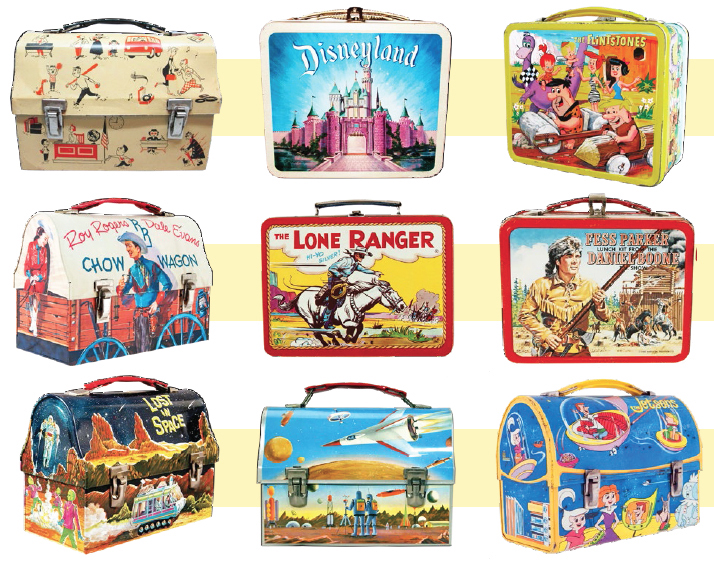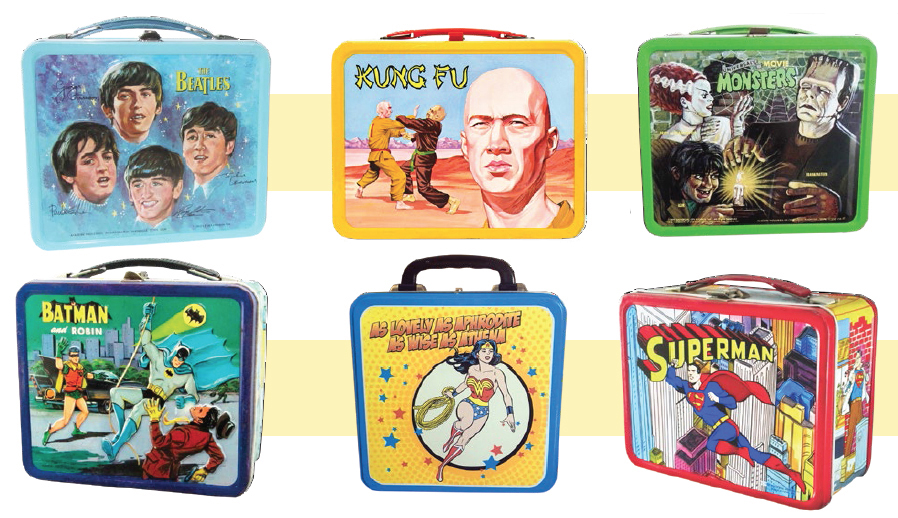Lunchbox Love - Page 3
 |
|
|
Not every box was based on a TV show or movie. There were sports boxes, generic boxes with gingham patterns, boxes celebrating your favorite food (Rice Krispies even), Barbie boxes and other toy boxes, and boxes about cowboys and outer space not tied to shows.
Given the period, you won't find many minorities pictured on lunchboxes, though African Americans figured in boxes celebrating the Harlem Globetrotters, the cartoon 'Wee Pals,' and the TV show 'Julia,' starring Diahan Carroll, "the first black women on a lunchbox," according to Woodall and Brickell.
Several boxes, in Spanish, played up stars from Spanish-language TV, and the soccer great Pele had his own box.
Since lunchboxes were aimed at pre-teens, for the most part, there are many period icons that were never stamped into steel. You won't find authentic mid-century lunchboxes for Federico Fellini or Ernie Kovacs or 'Psycho'—or even Marilyn Monroe.
But why didn't Donna Reed get a box? Or 'Leave It to Beaver'? On the show, Beav was shown carrying a lunchbox. But apparently the only 'box' that ever recognized the show came out decades later, as a retro container for DVDs of season one.
It's too bad adults didn't carry decorative lunchboxes in the '50s and '60s. Wouldn't it be great to have one showing JFK and Jackie—or how about 'I Like Ike'?
 |
|
|
Some of the artists who designed for lunchbox companies were well known, including the comic book artist Wally Wood. There was also the lesser known, outside the lunchbox world, Robert Burton, "a giant of lunchbox art," according to Woodall and Brickell.
Burton designed what is regarded as the first real lunchbox, Hopalong Cassidy, in 1949 or 1950 for Aladdin, as well as many other Aladdin boxes through the 1950s.
There had been a few earlier lunchboxes, including a Mickey Mouse box way back in 1935, which is often considered the first movie character lunchbox. But it was smaller than later lunchboxes, and oval and, more importantly, did not establish the lunchbox as something every child must carry to school, like the Hoppy box, which sold by the hundreds of thousands.
"The profits from the new lunchboxes enabled Aladdin to build a new lunchbox manufacturing plant," historian Mary Bellis has written.
Hopalong Cassidy began as a decal pasted onto a metal box. But soon lunchbox makers used lithography to print directly on the metal. Starting in 1957 some boxes were 'embossed,' with sections of the images projecting in low relief. Most boxes were rectangular, but some were 'domed' with a barrel vault.




